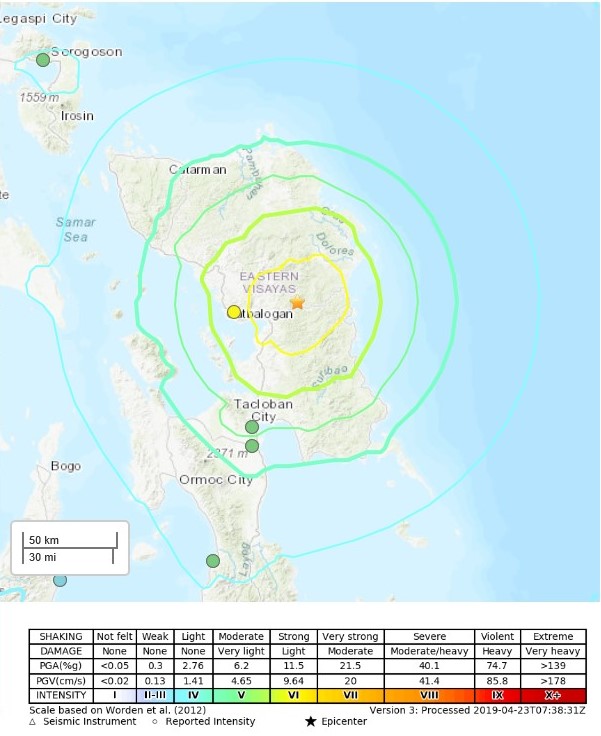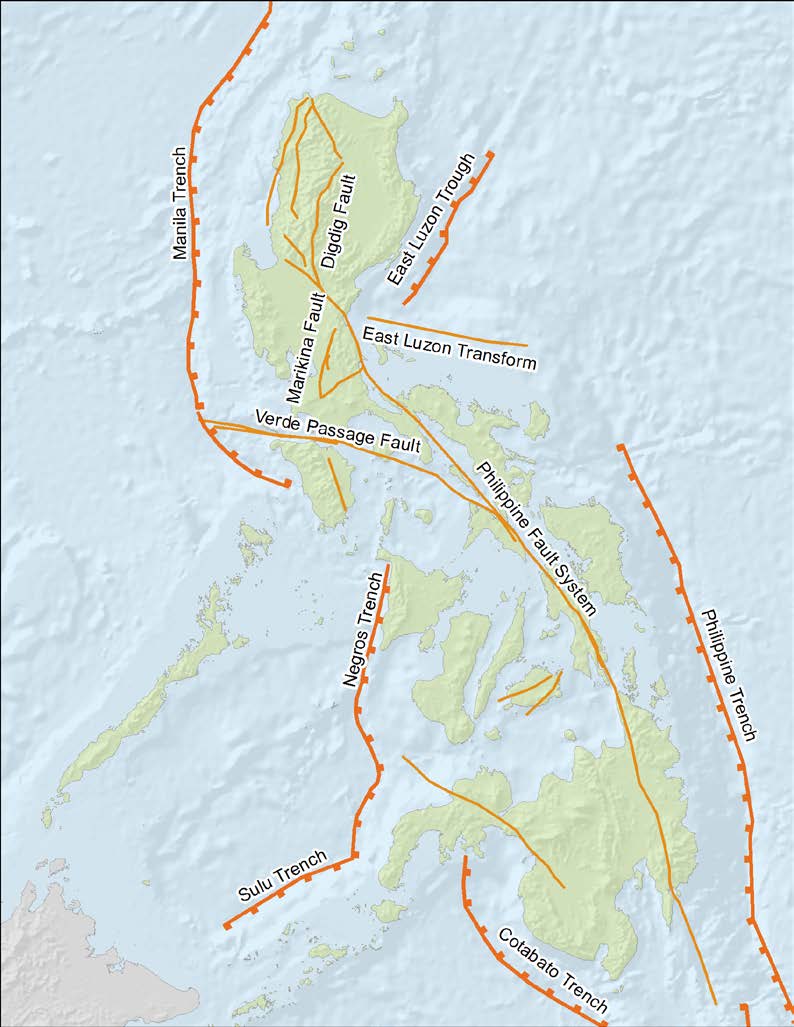
The Philippines has experienced two significant earthquakes this week within about 24 hours of each other, which is a reminder that the country is located in one of the world’s most seismically active regions.
The first temblor struck the main island of Luzon at 5:11 p.m. local time (09:11 UTC) with a magnitude initially estimated to have been M6.3 by the USGS but later revised to M6.1. Its epicenter was located near the town of Bodega, some 60 km (37 miles) northwest of Manila at a depth of 40 km (25 miles) according to the USGS. Some 52 aftershocks have been recorded.
Power outages, collapsed buildings, and casualties have been reported. Major damage was reported at Clark International Airport in Pampanga, north of the capital, where part of a terminal ceiling fell on passengers. The airport closed for 24 hours and some flights were delayed or canceled throughout the region. In addition, a landslide blocked a highway; Metro Rail Transit halted services pending track inspection; and schools in Manila closed for safety inspections. The shaking was felt in Manila, where tall buildings swayed and at one high-rise water cascaded dramatically from a ruptured rooftop pool.

An even stronger quake occurred on Tuesday afternoon local time (05:37 UTC) in the central Philippines, striking the town of San Julian in Eastern Samar province, within 50 miles of Tacloban City (Figure 1). The USGS estimates the magnitude to have been M6.4. Damage to roads and buildings is reported, but no casualties. According to the National Irrigation Administration, three dams in the central Philippines were damaged by the quake and need immediate attention.
Ring of Fire
The Philippines lies upon the so called “Ring of Fire,” which is also referred to less colorfully but more descriptively as the Circum-Pacific Belt. It is not a ring at all, but rather an inverted horseshoe that follows the boundaries of the Pacific Ocean for 40,000 km (24,900 miles). It is a seismically active belt punctuated with more than 450 active volcanoes, tectonic plate boundary faults, and 90% of the planet’s earthquakes.
The Southeast Asia region is characterized by rapid deformation, accompanied by pervasive faulting, widespread seismicity, and active volcanism. The region is also characterized by rapidly rotating microplates and broad zones of deformation, the motions of which are among the fastest in the world.

The Philippines are situated between the Philippine Sea and Eurasian plates, a boundary that is undergoing active subduction and collision. The primary subduction zones near the Philippines include the Manila Trench to the west and the Philippine Trench to the east. The East Luzon Trough is the northern extension of the Philippine Trench and dips west beneath Luzon. The Philippine fault, one of the largest strike-slip crustal faults on Earth, strikes through the islands of the Philippines for over 1,000 km from south to north. The region is also characterized by active volcanism, including the well-known Mount Pinatubo and Taal Volcano.
For the Philippines, “The Big One” would be a major quake striking the 100-km Marikina Valley Fault System, which is straddled by six cities in Metro Manila and nearby provinces. A 2004 study argued that an M7.2 temblor on the fault could cause the collapse of 170,000 homes and kill 34,000 people. Fortunately, this week’s earthquakes have not been as destructive.



